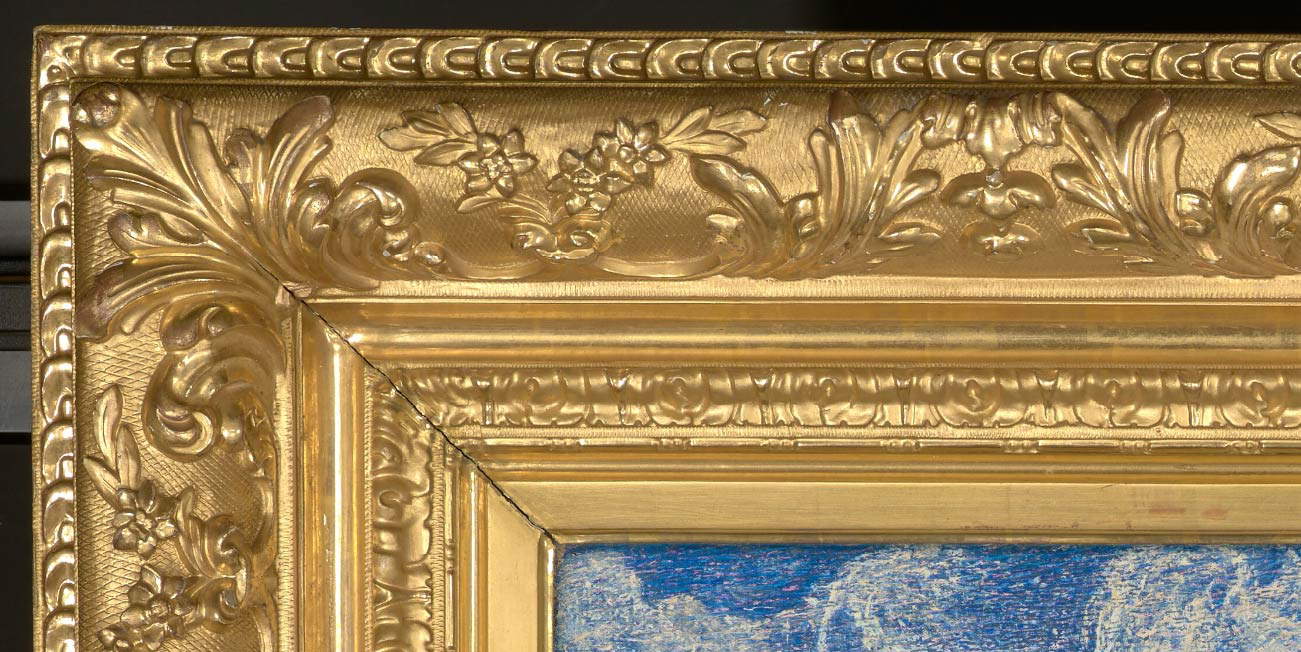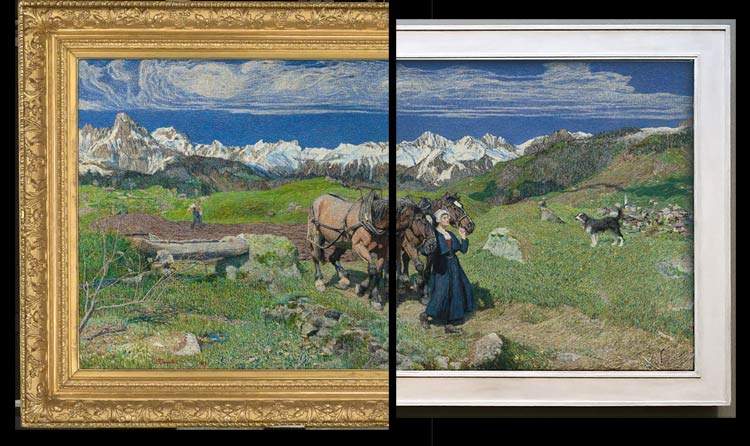The Getty Museum is distorting a painting by Giovanni Segantini (Arco, 1858 - Mount Schafberg, 1899) by going to replace the frame of Spring in the Alps, a painting that the Los Angeles museum purchased in January 2019 and that until not long ago was displayed in its original frame. It is a work that Segantini had painted for a San Francisco collector, Jacob Stern, who at the time of the painting’s creation (it is from 1897) held the position of director of Levi Strauss & Co., the well-known jeans company. The painting remained in the possession of Stern’s family until 1999 and then, as mentioned, exactly two decades later the Getty purchased it for its collections.
Springtime in the Alps, Davide Gasparotto, senior curator of painting at the Getty, explained at the time the purchase was announced, "is a joyful hymn to the cycle of life and the awakening of nature during spring after a long, hard winter. It is an extraordinarily accomplished work in which symbolism and naturalism are inextricably intertwined. Segantini himself counted it among his absolute masterpieces.“ According to Gasparotto, it is also ”one of the greatest paintings of nineteenth-century Italian painting in America, an iconic work that expands our ability to tell the story of nineteenth-century European painting."



It had, moreover, been the museum itself, again in the announcement of the purchase, that pointed out that Spring in the Alps had “arrived at the Getty in the elaborate frame that the artist originally designed for the work.” Now, however, the museum has gone ahead with the frame change (it is not known why: from the photos posted on the publications mentioned below and those found on social it appears there are no captions advising of any restoration, nor have any notes been posted on the website), which probably took place in April, since the first news about the “reframing” of Spring in the Alps is found on William Poundstone’s “Los Angeles County Museum on Fire” blog given in that month (and the few photos on social of users posting Spring in the Alps with the new frame are all after that). Poundstone wrote about how the original gilded frame had been replaced with a vaguely Shaker-style white frame that “emphasizes the artist’s modernism.” According to Poundstone, the operation might be aimed at making the U.S. public appreciate Segantini’s art, which is little known in those latitudes, and thus the Getty curators probably tried to prevent California visitors, seeing the work inside that frame, from thinking of it as a lingering work.
The substitution, however, was strongly criticized by art historian Lynn Roberts on her The Frame Blog, a publication all about frames: “It seems to be misdirecting the viewer, who is led away from the work and the artist’s intentions,” Roberts explained. "Collectors in the past have often had pieces they have acquired or inherited re-framed to imprint ownership, or to conjugate them with other works in their galleries, or even as part of renovating and updating an interior inherited from an older generation, but today from the world’s leading museums we should expect a better, less subjective and more historically enlightened approach. From the moment German curator Wilhelm von Bode began in the 1880s to campaign for a museum in Berlin that would display paintings, sculpture, and decorative art from the same period all together in an integrated interior, the path toward presenting the museum would surely have continued progressively in this direction, guarding and preserving the artists’ frames as well.
The frame of Spring in the Alps is the result, Roberts went on to explain with a lengthy digression on Segantini’s frames, of an imaginative journey characterized by talent and imagination: indeed, even the frame, in the case of the painting purchased by the Getty, is a participant in the painting’s theme, with its springtime floral motifs that refer to the cycle of nature (and in particular to the nature of theEngadine: the flowers carved on the frame are in fact daffodils from the southern Swiss Alps). Moreover, the frame of the Getty painting is also mentioned in a letter Segantini wrote in 1897 to the merchant Alberto Grubicy, in which the artist urges the ordering of materials to finish the work in a reasonable time. Finally, for Mirella Carbone, director of the Segantini Museum in Sankt Moritz, the Trentino painter’s frames were “an integral part of his works.” In short: the Getty, with this operation, has actually truncated an important part of Segantini’s work. It is therefore hoped that soon the museum will mount the painting again in its original frame, to restore dignity to the great artist.
 |
| Poor Segantini! The Getty removes the frame he designed from the painting and changes it with a new one |
Warning: the translation into English of the original Italian article was created using automatic tools. We undertake to review all articles, but we do not guarantee the total absence of inaccuracies in the translation due to the program. You can find the original by clicking on the ITA button. If you find any mistake,please contact us.